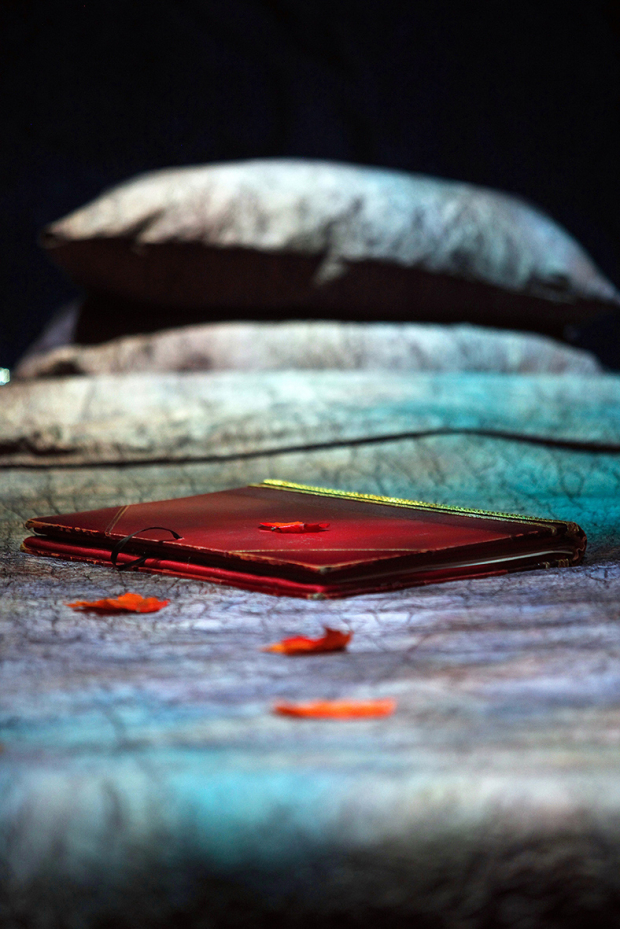Let's Talk About Sets: Simon Kenny on Sleeping Beauty
As we enter the theatre, we find an oversized child's bed in a woodland clearing and a large book of fairy tales. The story begins, and as our reader drifts into a deep, dream-filled sleep, our magical forest of thorns begins to come to life…
With threatening thorns, bloodthirsty ogres and a thoroughly modern Beauty – all played here by a brilliant gang of seven actor-musicians – Rufus Norris' adaptation of Sleeping Beauty demands that you embrace the darker aspects of the story while also creating space for plenty of fun, magic and a customary bit of Christmas sparkle.
The first half is told largely in flashback, jumping between the magic forest of thorns protecting Beauty asleep in the palace, and the origins of her story – how Beauty comes to be born, why she is cursed and how she inevitably comes to prick her finger and fall asleep. The story as we know it is wrapped up by the interval when Beauty is woken by her Prince, but here the second act takes a distinctly darker turn as it wonders what might happen after ‘happily ever after’.
Referencing much-loved fairy tale illustrators such as Jan Pienkowski and the beautiful cut-out animations of Lotte Reiniger, we created a world where the forest of magic thorns has started to engulf the theatre. Palaces and spinning wheels appear as framed silhouettes, a puff of fairy dust (and a little theatre magic) can move us from time and place, and mysterious woodland holloways act as portals into our magical story.
With scenes set in the Forest of Thorns, the Royal Palace and the Castle of an ogress, I wanted each of the locations to have their own distinct aesthetic, but to feel as though they’d all be conjured from the same world. While there are dramatic changes in the look of each location – both scenically and working with lighting designer Joshua Carr – the overall frame of the set remains the same: a large portal built of thorns and the spinning wheels from across the kingdom that had been broken to protect Beauty from her fate.

© Philip Tull
The Forest is a mass of tangled gnarled rope creeping all around the stage and stretching into the audience, with broken spindles and watercoloured gauzes creating eerie shadows, all rooted in the earth with traps and a concealed stage lift. By contrast, the Palace is all gold, air and pageantry, with Tudor royalty and minstrels in a world of satins, velvets, bunting and ribbons with flying and hanging elements. For the Castle, the other locations turn in on themselves to reveal a shadowy world of impressive scale, with massive carved doors, arched windows, and medieval costume. As the design developed, the feel of each of the locations was both inspired and complimented by the evocative music Tarek Merchant composed for the piece.
It was vital to me that both the design and the staging feel fully integrated into the beautiful and unique Watermill space. I wanted to weave the theatre itself into the design, to make the set feel like it had grown there quite naturally. By staging the show in thrust, more of the audience was brought directly into the action and we could have actors and scenery spilling into the auditorium. The director, Bill Buckhurst, and I have collaborated together many times and always relish the chance to invite an audience into the work in this way.
The other key collaboration was with the brilliantly creative and resourceful in-house team at the Watermill – it’s always a joy to work with them. Whether it’s a magically turning spinning wheel or a character needing to instantly become heavily pregnant, they’re sure to come up with an ingenious solution (no spoilers!).
By Simon Kenny
Sleeping Beauty runs at the Watermill Theatre until 1 January.










